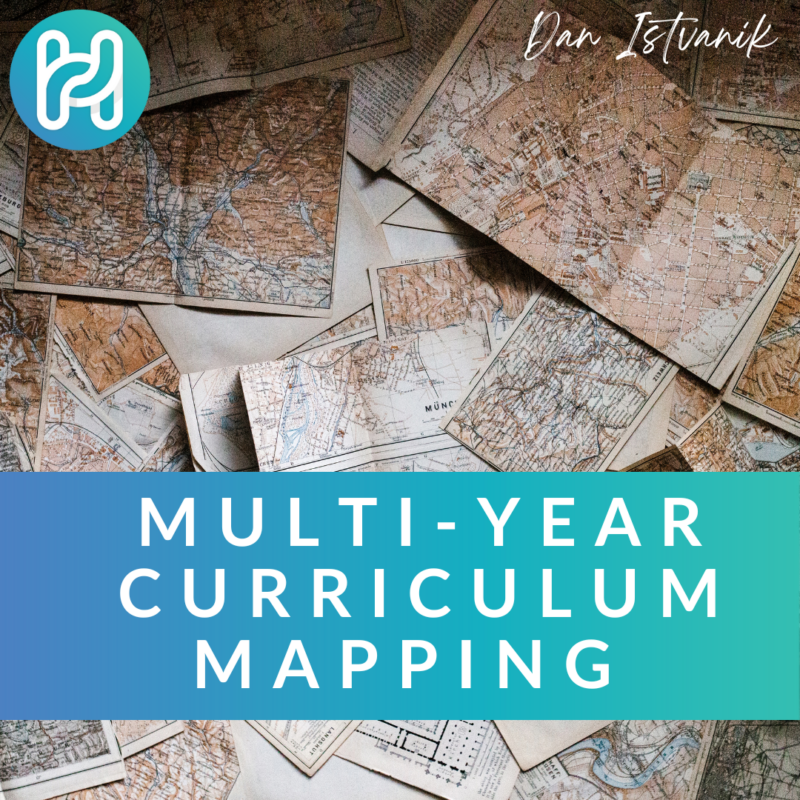Youth Ministry Hints, Youth Ministry Lessons, Youth Ministry Resources, Youth Ministry Thoughts
Multi-Year Curriculum Mapping
Multi-Year Curriculum Mapping or On the Road to No-where?
It was called “Road Rules.” The plan was to take a group of students on a week-long trip with no destination. I knew where we were going but decided that no one else should know. I ended up with upset parents and uninterested students. No one knew where we were going and what they were signing up for!
I sometimes think in youth ministry; we do the same thing every week by only planning lessons a few days (maybe even hours) ahead. We ask to take students on a spiritual trip without letting anyone in on the destination. We ask parents to trust us without including them in our plan.
It is time for us to have a map and destination for our teaching that we are willing to share. It is back-to-school, so think about your student’s school setting. They are being taught according to the specific curriculum with direct learning destinations in mind. Teachers have benchmarks and standards based on a clear plan for a specific destination. Why are we, who are teaching the most important truth, not doing the same!?
Multi-Year What?
I know anything in youth ministry that includes in its name “multi-year” has an immediate negative response. Then you see the word “curriculum” and immediately think about outdated Sunday school books with bad clip art and fill in the blanks.
When I first started doing youth ministry, I was afraid that too much-advanced planning would kill my creativity and quench the spirit. My mind, however, changed after getting my Masters in Middle School Education. I realized actually the opposite is true. I found all my concerns were solved by planning a multi-year curriculum. I was given more freedom, creativity, and even personal breathing room in my schedule.
Multi-year curriculum planning is simply making a map for your teaching over the long haul of your ministry journey. In the simplest terms, it is sitting down with the “scope” of your teaching time and coming up with a “sequence” of lessons and teaching. The “scope” is the years you are teaching your students. The “sequence” is the order in which you will cover your topics and fit them together.
Is there an App for that?
Like any other youth ministry trip, you need to know where you want to go and who is going with you and then plan the route you are going to travel, including stops along the way, to arrive at your destination safely.
Where Are You?
Physically, where do you live and minister? As you develop a set of lessons for the long haul, you need to understand where God has placed you. You need to know your area, church, and group.
Ask some hard questions about your area. Think about the setting (urban, suburban..), region, diversity, socio-economic characteristics, etc… As you look at your area ask, “What are the things that are important and relevant to my area, where my students live out their faith daily?”
Next, understand your church. What are the values and theology that characterize your church? Prepare your students to transition into an active role in the whole church. Teach in ways that honor the core values of your church. Additionally, find out what other age-graded ministries are teaching, especially the children’s ministry. If a topic is already being covered thoroughly, focus on those topics that are not being covered.
Who Is Going With You?
Who are your students and adult leaders? Ownership of the journey is critical, so include students and adults in the process. Form a team and allow them to create a list of suggested topics and ideas. Students who have ownership will be willing to listen, and adults included in the process will be willing to teach on topics they suggested.
This will also allow you to get to know our students, empowering you to teach into their lives and not preach to them. While this process can seem removed and academic, it can actually be rooted in relational, connected ministry.
Making a Map.
A “scope and sequence” is the map you are making. Decide how long, in what order, and where you are going. It can take on any form, any length, and can be divided in whatever way fits your students and ministry area. . It is essential to organize your topics and focus on your curriculum. Start by grouping topics according to what you feel fit best together (beliefs, life topics, social issues…), then organize the order of topics inside those groups. You should plan from foundational to more advanced, like building blocks of learning as one truth prepares for the next. After you have organized, grouped, and ordered your teaching topics, decide on the scope of your curriculum and the period it covers. Like a good outline, you do not include everything you teach. You are coming up with a main idea/theme for each time period, lesson unit topics, and individual lesson topics. Be aware of holidays and schedules that can be used to your advantage for topics and teaching.
Once you have a scope and sequence, you can now “color” the map you have created with as much or as little flexibility as you like. Create your own lessons that fit within your topics, purchase lessons or curriculum that fit, or a mix of both. Depending on your time, abilities, and position, you now have a clear direction for teaching. Also, consider including retreats, mission trips, and other events that fit that year’s overarching focus.
Most important of all, communicate and share your map. Create an easily understandable document to make available to those connected to what you do. It can be a simple Word document or something more advanced. Either way, it is important to inform, interest, and include your students, parents, volunteers, and even your church leadership in the long-term plan.
Is this really the right direction?
Like anything you do, there are advantages and concerns in choosing to plan for a multi-year curriculum. The advantages fall into four main areas: Assessment, Accountability, Action, and Acceptance.
- Assessment. You now have a tool that will allow you a measurement of what is being “taught” and “caught.”
- Accountability. You have a tangible source of accountability to offer parents and other staff members.
- Action. Having an organized plan for an extended period pushes your ministry toward long-term discipleship. You are more intentional if you know what you are supposed to be doing. Instead of endless hours of brainstorming and distractions, you are action focused. As mentioned above, planning frees up your schedule for more active ministry with students one-on-one.
- Acceptance. A better word could also be professionalism. Simply by taking time to plan and organize your ministry will be seen differently. Offering transparency about what you are doing and teaching gives way to better acceptance and support, especially by parents and leadership.
Consider and pray through this process and the destination of your teaching. You know as well as I do that we are driving on a winding, ever-changing road. We are simply seeking to invite as many students, leaders, and parents as possible to join us on the journey by offering a map for the trip ahead.




